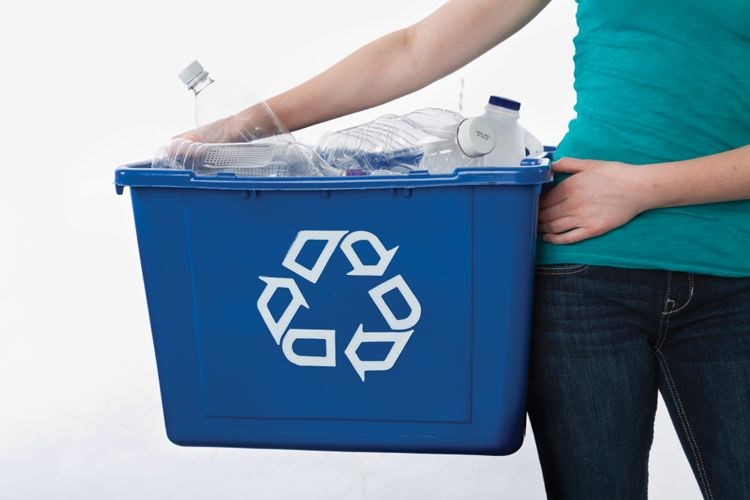We live in a world dependent upon polymers generated from petrochemicals which are able to be molded using heat and pressure.
We call these polymers plastics, although clay and glass are also plastic because they, too, can be molded when soft and set into rigid or slightly elastic form. However, we now use the term plastic to almost exclusive refer to a wide range of synthetic organic polymers.
Early this week, I was speaking about Thorstein Veblen (although I mangled his name!) and his theory of conspicuous consumption. We tend to think of things made with plastic as "disposable items" or "cheap" but they also allow us to have consumption habits where we buy and replace items long before they are worn out.
A simple example is a soda straw.
Made of plastic, we use it once for a short period and throw it away. It contains plastic which doesn't break down easily and can ultimately end up in waterways leading the ocean. Such items are a hazard to marine life and significantly impacting species such as the albatross and the sea turtle.
A polymer or plastic is generated from monomers linked together to form a chain. An analogy is a beaded necklace with one bead plugging into the next. Put enough together and you get a long chain.
In the case of polymers, the beads are molecules - monomers - such as ethylene and vinyl chloride. Polyethylene terephthalate is actually composed of two monomers in an alternating sequence joined by ester linkages.
The number of monomers in a chain is somewhere between 5,000 and 1,000,000 or more depending on the polymer's use. Polymers are really just long chains of carbon atoms joined together.
The big six are:
(1) PETE or PET (Polyethylene terephthalate) used in two litre pop bottles and mouthwash bottles. It is transparent with high impact strength and is impervious to acids and atmospheric gases. These latter properties make it ideal for dealing with the acid and carbon dioxide in soda pop.
(2) HDPE (High density polyethylene) is used in milk jugs and trash bags. It is soft, flexible, and opaque but mechanically tough.
(3) PVC (Polyvinyl chloride) is used in cooking oil bottles and for packaging around meat. It is a rigid and transparent with high impact strength. More importantly, it is impervious to oils and other organic materials so it can be used to transport petroleum or natural gas.
(4) LDPE (Low density polyethylene) is used in grocery and produce bags, food wraps, and bread bags. It is softer than its higher density cousin but not as mechanically tough. This is why grocery bag handles stretch so much when overloaded. The handles actually convert from low density to high density polyethylene in the process.
(5) PP (polypropylene) is used in shampoo bottles, yogurt containers, straws, and diapers. It can also be found in fleece vests and carpeting. It is opaque with a high melting point and high tensile strength. It has the lowest density of the major commercial polymers.
(6) PS (polystyrene) is used to make hot beverage cups, take-out boxes, egg cartons and anything else made of styrofoam. It is easily fabricated and when blown into styrofoam, it has tremendous insulating properties but it is also readily soluble in organic solvents.
The numbers associated with each polymeric compound appears in the little recycling triangle somewhere on the surface of the plastic object. There is a category (7) which is the catch all for any other polymer.
Some of these polymers are easier to recycle than others. But they must all be sorted according to the different type of polymer involved in order for recycling to make any sense. Mixing different types means the recycled product is virtually unuseable.
Recycling plastics would be ideal but as a society we are far from 100 per cent efficient. Indeed, for PET, it is estimated only 30 per cent is recycled. The rest ends up in landfills or the environment as a result of overconsumption.
However, there is exciting news in the bio-degradation world as organisms such as Ideonella sakaiensis 201-F6 have been found which are capable of eating the material.
The scientists found this bacterium by screening 250 PET debris-contaminated samples of soil, sediment, and wastewater along with the activated sludge from a PET bottle recycling site. Careful isolation of the organism and cultivation on low-crystallinity PET eventually led to pure cultures of the bacterium.
The biological degradation process is not quick. The microbes only consume the polymer at a rate of 0.13 milligrams per square centimetre per day.
However, now that scientists know where to look and what enzymes are involved, it may be possible to tweak the process through genetic engineering.
Hopefully, we will have an effective way to break down plastics, such a soda straws, before much more plastic accumulates in our environment.



